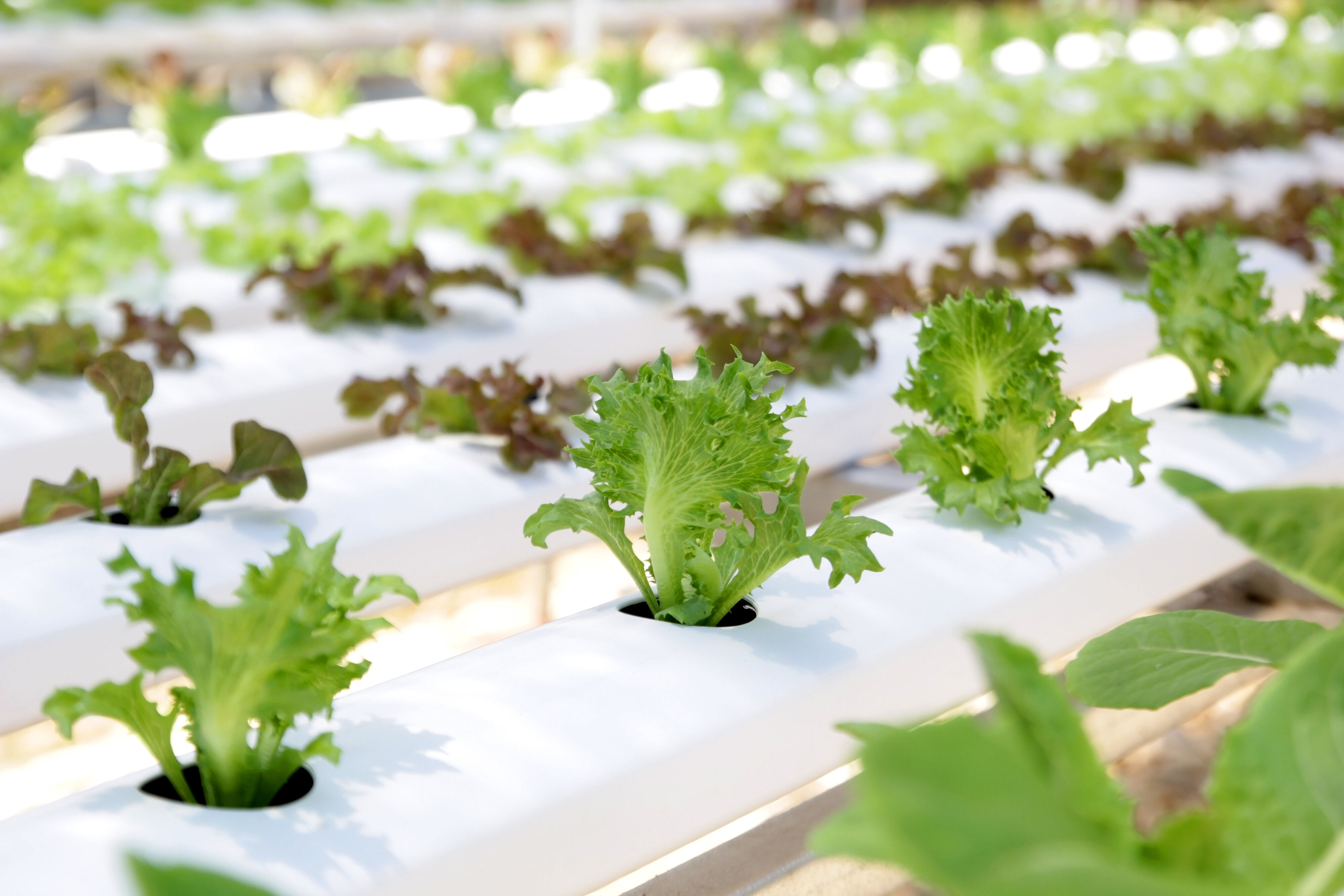Understanding Hydroponics: The Science of Soil-less Cultivation
What Is a Hydroponics System? Defining the Core Concept
Hydroponic systems grow plants without soil, instead feeding them through water mixed with nutrients and oxygen. Plants grown this way don't need to waste energy searching for food underground since everything they need comes right to them. When gardeners keep things just right with pH levels around 5.5 to 6.5 and watch their EC readings carefully, crops can actually grow about half again as fast as those planted in regular dirt. Plus these setups use roughly ten times less water too according to some recent studies from Biodome back in 2024. Most modern setups use stuff like clay pebbles or rock wool to hold plant roots steady but still let nutrients get absorbed properly. This makes a big difference where water is scarce or when growing upwards in city spaces.
The Evolution and Modern Applications of Hydroponics
Looking back at history, we see hydroponics roots in ancient Aztec floating gardens, but today it's become really important for sustainable farming practices. About six out of ten lettuces grown commercially across America come from either hydroponic or aquaponic setups these days. City based farms are getting creative with something called NFT systems that basically run a thin film of nutrient rich water over plant roots. This method helps them produce leafy greens around 30 percent quicker compared to traditional field growing methods. Meanwhile folks who cultivate medicinal herbs often go for aeroponic systems because they get better results when it comes to those valuable compounds known as terpenes. The latest tech advancements include smart sensors that track things like dissolved oxygen levels and tiny nutrient amounts in real time. These innovations fit right into what the 2024 Global Food Security Report calls for regarding climate resilient farming approaches.
The Role of Nutrient Solutions in a Hydroponics System
Nutrient Solution Composition: The Lifeblood of Hydroponic Growth
In hydroponic growing setups, soil gets swapped out for specially mixed nutrient solutions that have everything plants need to grow healthy. The nutrient mix usually contains both big nutrients like nitrogen, phosphorus, and potassium along with smaller ones such as zinc and manganese. What's interesting is how these nutrients change depending on what stage the plant is at. Take lettuce for instance it really needs lots of nitrogen when it's just growing leaves. Tomatoes tell a different story though they start asking for more phosphorus once they begin to flower. This kind of thing was actually highlighted in last year's Hydroponic Farming Report which looked at how different crops respond to various nutrient compositions.
| Nutrient Type | Key Functions | Common Sources |
|---|---|---|
| Macronutrients (N, P, K) | Leaf growth, root development, disease resistance | Calcium nitrate, monopotassium phosphate |
| Micronutrients | Enzyme activation, chlorophyll synthesis | Iron chelates, zinc sulfate |
pH, Temperature, and Oxygenation: Balancing the Root Zone Environment
Maintaining a pH range of 5.5–6.5 ensures optimal nutrient uptake—a 0.5 deviation can reduce absorption by 30% (AgriScience, 2023). Water temperature between 65–75°F prevents root rot while promoting oxygenation. Advanced systems use air stones or waterfall designs to dissolve 8–10 mg/L of oxygen, mimicking natural soil conditions.
Monitoring and Adjusting Nutrient Levels for Optimal Plant Health
These days, automated sensors are constantly monitoring both electrical conductivity (EC) levels and pH readings for growers. When something goes off track, they get immediate alerts about what's wrong. Take EC levels spiking past around 2.5 mS/cm as an example this usually means there's too much salt building up in the system, so a good old fashioned reservoir flush becomes necessary. The folks at Bright Lane Gardens have put together their Hydroponic Nutrient Management Guide which includes tools that make these kinds of adjustments easier through AI powered suggestions on proper dosages. Growers report making fewer mistakes when using these guides rather than going purely by hand calculations, with some estimates suggesting error rates drop somewhere close to half.
Essential Components of a Hydroponics System
Core Equipment: Pumps, Reservoirs, and Net Pots
Every good hydroponic setup needs three main components working together: water pumps to move around those nutrient solutions, reservoirs where we keep and stabilize all that liquid goodness, plus net pots that hold plants in place while letting roots grow freely. When it comes to pumps, getting the right flow rate matters a lot. A study published in Frontiers in Sustainable Food Systems back in 2025 found that when gardeners get this calibration right, root oxygen levels can jump as much as 40%. Most reservoirs these days are built from UV resistant plastics which helps cut down on algae problems and keeps pH levels from bouncing around too much. And then there are those net pots. They usually sit alongside something inert like clay pebbles. These little guys give plants something solid to grab onto without messing with what's happening in the root zone chemistry.
Growing Media Options and Their Impact on Root Support
Hydroponic growing media need to strike a good balance between holding water and allowing enough air space something regular soil handles naturally. Rockwool is made from minerals and can hold lots of water, but gardeners usually need to treat it first because it tends to be too alkaline for most plants. Coconut coir comes from coconut husks and works well since it creates those tiny air spaces roots really need to breathe properly. Recent research in 2024 looked at different growing mediums and discovered something interesting plants in expanded clay aggregate took up nutrients about 22 percent faster than those in perlite. The reason? Clay aggregate has just the right mix of big and small pores that let water and nutrients flow through while still giving roots room to grow.
Oxygenation Tools: Air Stones and Aeration Techniques
Healthy roots really depend on having enough dissolved oxygen in the water. When levels drop below 5 mg/L, plants basically suffocate. Air stones hooked up to good quality aquarium pumps work great for getting those tiny bubbles into reservoirs, which helps boost oxygen levels back up to where they should be around 6 to 8 mg/L. Some fancier systems use these venturi valves that actually push air right into the nutrient lines, so they don't need as much power running all day long. For folks with smaller grow operations, just stirring the water manually every day makes a big difference too. Gardeners report cutting down on stagnant water problems by about 30% with this simple technique alone.
Types of Hydroponics Systems: From DWC to Aeroponics
Deep Water Culture (DWC) and Wick Systems: Simplicity for Beginners
For those new to growing plants without soil, Deep Water Culture (DWC) and wick systems make great starting points. With DWC, the roots hang right in the water where they get all the nutrients they need. Most folks add air stones or something similar to keep things moving and avoid bad smells from stagnant water. According to research published last year, these systems work really well for growing leafy greens such as lettuce and spinach, achieving about 92% success rates when conditions are just right. Then there's the wick system approach which works on simple physics principles. Nutrients travel up through materials like cotton or nylon via what's called capillary action, so no power tools or electric pumps needed at all. What makes both methods appealing is how straightforward they are to set up. DWC needs nothing more complicated than a container for holding water and some net pots for supporting plants. Wick systems are particularly good for people who want to grow herbs in limited spaces around their homes. Looking at recent market trends shows why so many hobbyists choose these options over pricier alternatives. The initial investment tends to be roughly 30 percent cheaper compared to more complex hydroponic setups, making them attractive for anyone wanting to experiment with indoor gardening without breaking the bank.
NFT, Ebb and Flow, and Aeroponic Systems: Advanced Efficiency
For commercial hydroponic operations, three main systems stand out when it comes to efficient resource management: Nutrient Film Technique (NFT), ebb and flow setups, and aeroponic systems. With NFT, growers channel a thin layer of nutrient solution over plant roots, which cuts down water usage significantly compared to traditional soil methods somewhere around 40 to 60 percent according to various studies. Ebb and flow systems work differently by flooding grow trays periodically then draining them again, creating that crucial balance between keeping roots hydrated while still allowing oxygen to reach them. Aeroponics takes things even further by hanging plants so their roots dangle in the air and get misted regularly with nutrients. Some greenhouse tests have actually seen strawberry and pepper crops growing up to half again faster using this method, though many small scale farmers find the initial investment quite steep. While all these techniques need careful monitoring of temperature, humidity, and pH levels, they generally produce much better harvests from the same space, which explains why we're seeing more of them popping up in city-based vertical farming projects lately.
Choosing the Right Hydroponics System by Crop Type and Scale
Getting the right plants into the correct hydroponic setup really boosts what we can get out of our growing space. Most leafy greens and herbs do just fine in deep water culture or wick systems since they don't need too much nutrition. On the flip side, tomatoes and cucumbers tend to thrive better when using drip systems that give them exactly what they need where they need it. Big growers will sometimes mix NFT with aeroponics for different types of crops together. They'll use NFT for all those green veggies because it saves water, then switch to aeroponics for things like strawberries where getting a quick harvest matters most. According to some research published last year, about four out of five commercial lettuce farms have switched to NFT systems these days. Meanwhile around two thirds of strawberry farmers prefer aeroponics simply because it gets them picking sooner rather than later.
Environmental Control and Optimization in Hydroponics
Maintaining pH and Climate Stability for Maximum Yield
What really sets high performance hydroponic systems apart from regular farming is their ability to control the environment down to the smallest detail. Studies indicate that keeping the pH around roots somewhere between 5.5 and 6.5 makes plants absorb nutrients about 30 percent better than what happens in soil grown crops according to Velazquez-Gonzalez research back in 2022. These days, most setups have automated sensors that tweak acidity as needed while keeping dissolved oxygen levels steady around 6 to 8 mg per liter. That range seems to work wonders for speeding up growth rates in lettuce and herbs by roughly 15 to maybe even 25 percent as Gómez found out in their study from 2019. Tomato growers who invest in full climate control systems typically see about a quarter boost in harvests when they maintain temperatures somewhere between 70 and 80 degrees Fahrenheit throughout the year with humidity staying comfortably in the 60 to 70 percent range.
Energy Efficiency vs. Precision Control: Industry Challenges
Getting hydroponic systems to save energy while meeting those super tight environmental specs is quite the balancing act. Research back in 2021 showed something interesting when they combined those special spectrum LEDs with heat recovery tech it knocked energy consumption down around 40 percent according to Weidner and team. But here's the catch most growers still struggle with getting all those settings right, which comes out to about 62% saying calibration headaches are what stops them cold. Fortunately, modular setups are changing things up these days. Farms can start simple with just timers and slowly work their way up to fancy AI control systems over time. Still, the math doesn't lie for average sized operations looking at breaking even takes anywhere from three to five years because sensors and software aren't exactly cheap either.
FAQ
What is hydroponics?
Hydroponics is a method of growing plants without soil, using nutrient-rich water solutions to supply plants with essential nutrients and oxygen.
What are the advantages of hydroponic systems?
Hydroponic systems can grow plants faster than traditional soil methods, use less water, and are suitable for areas with limited water availability or urban spaces.
How does pH affect hydroponic growth?
Maintaining a pH range of 5.5-6.5 is crucial for optimal nutrient uptake. Deviations outside this range can significantly reduce nutrient absorption by plants.
What types of plants are best suited for hydroponic systems?
Leafy greens, herbs, tomatoes, cucumbers, strawberries, and peppers are well-suited for hydroponic systems. Different plants may require specific types of hydroponic setups for optimal growth.
Are hydroponic systems environmentally friendly?
Yes, hydroponic systems are considered environmentally friendly as they use less water than traditional farming methods, can reduce the need for pesticides, and are efficient in resource management.
What are the common challenges in hydroponic farming?
Common challenges include monitoring and maintaining pH levels, nutrient management, and energy consumption associated with running systems and climate control.


